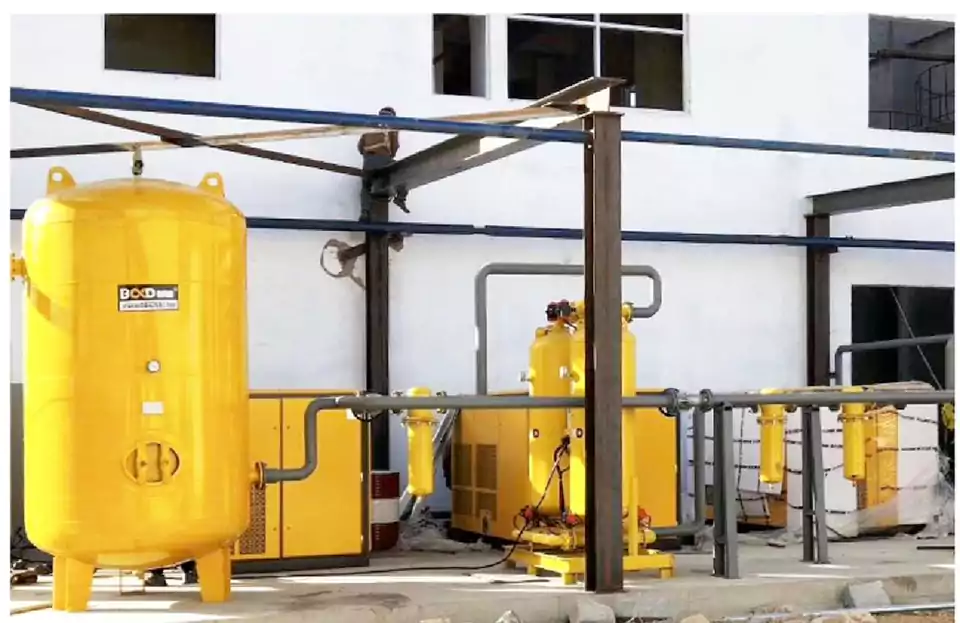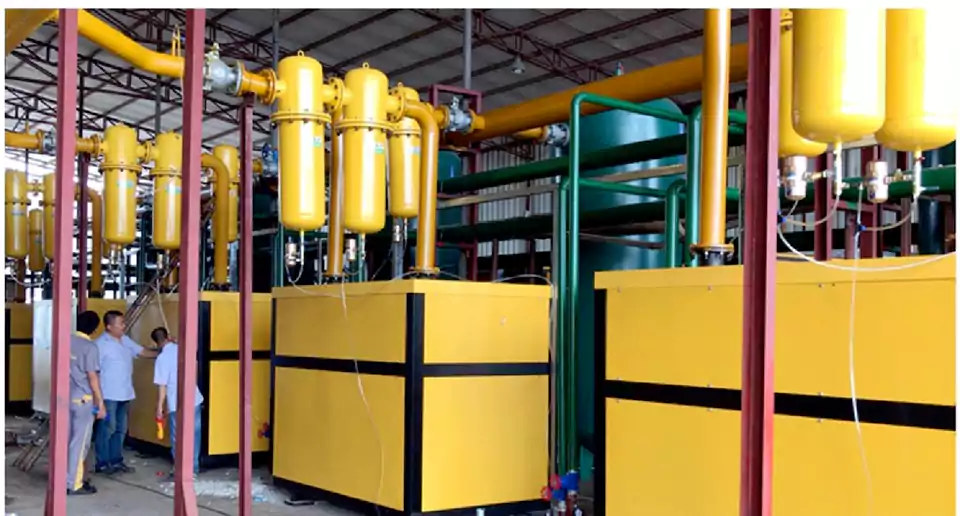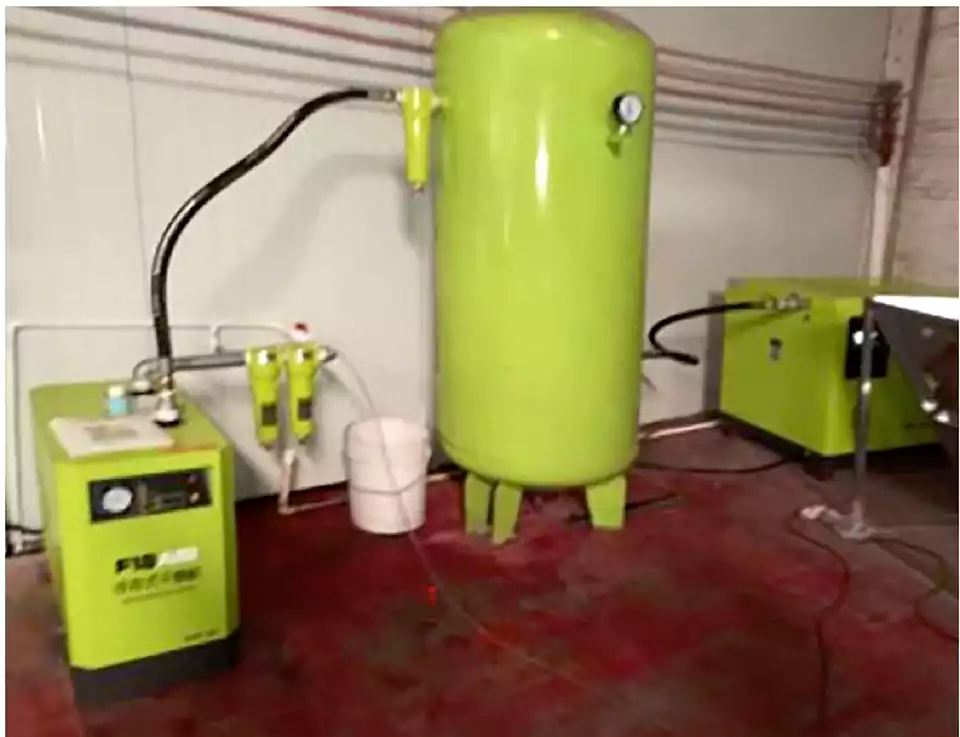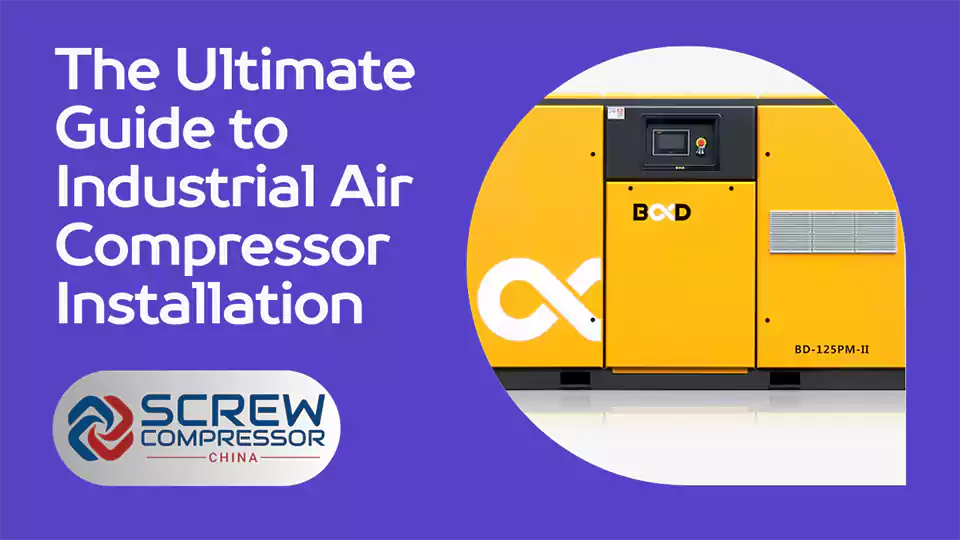Installing an industrial air compressor is a complex task that requires careful planning and execution to ensure optimal performance, longevity, and safety. This comprehensive guide provides detailed insights into each step of the process, from selecting the right location to connecting the power supply, ensuring a successful air compressor installation.
Choosing the Right Location
Indoor vs. Outdoor Installation
The installation location of your air compressor can significantly impact its efficiency and lifespan. Extreme temperatures, moisture, and airborne contaminants can adversely affect compressor durability and air quality. Therefore, it’s recommended to install compressors indoors to protect them from environmental extremes and to facilitate easier maintenance.
However, if outdoor installation is necessary, ensure proper sheltering and ventilation to mitigate these risks. When selecting an indoor location for your rotary screw air compressor, consider factors such as:
- Accessibility for maintenance and repairs
- Proximity to the point of use to minimize pressure drops in the distribution system
- Noise levels and potential disturbance to nearby work areas
- Availability of adequate power supply and ventilation

If outdoor installation is unavoidable, take additional precautions to protect the compressor from the elements. This may include:
- Constructing a lean-to or roof to prevent rain from leaking into the electrical cabinet
- Ensuring the inlet side of the compressor is not too close to the edge of the roof to prevent water ingestion
- Providing proper ventilation and air circulation to prevent overheating
- Installing weather-resistant enclosures or covers to shield the compressor from direct sunlight, dust, and debris
Ensuring Adequate Airflow
Proper ventilation is crucial for air-cooled compressors. It’s essential to maintain at least three feet of open space around the units to ensure good airflow and prevent overheating. For detailed tips on maintaining proper airflow and ventilation, visit Sullair’s Industrial Air Compressor Installation Tips.
Key considerations for ensuring adequate airflow include:
- Providing sufficient clearance around the compressor for air circulation
- Installing ventilation ducts or fans to remove hot air and bring in cool air
- Regularly cleaning air filters and coolers to maintain efficient heat exchange
- Monitoring ambient temperature and humidity levels to prevent excessive heat buildup
Preparing the Foundation
A solid foundation is critical for the stability and performance of your air compressor. The compressor should be installed on a flat and level concrete floor to prevent vibration and misalignment. For more information on designing and preparing for your installation, Kaishan USA offers excellent guidelines.
When preparing the foundation for your oil-free rotary screw air compressor, keep the following points in mind:
- The foundation should be strong enough to support the weight of the compressor and any attached equipment
- Use vibration isolation pads or mounts to minimize the transmission of vibrations to the surrounding structure
- Ensure proper drainage to handle condensate from the compressor, aftercoolers, dryers, and air receivers
- Follow local building codes and regulations for foundation construction and anchoring requirements
Power Supply and Electrical Connections
Before the installation, verify that your electrical service voltage matches the compressor’s requirements. Inadequate or excessive voltage can cause damage not covered under warranty. Detailed information about electrical supply considerations can be found in the Air Compressor Installation Guide by Compressed Air Systems, Inc..
To ensure proper electrical connections for your air compressor:
- Have a qualified electrician perform all electrical work in compliance with local codes and regulations
- Use appropriately sized wiring, fuses, and circuit breakers based on the compressor’s power requirements
- Install proper grounding to prevent electrical hazards and ensure equipment safety
- Consider installing a dedicated electrical circuit for the compressor to avoid overloading shared circuits
- Regularly inspect electrical connections and components for signs of wear, damage, or loose connections
Air System Setup and Piping
Air Intake Filtration and Cooling System Configuration
Air quality directly influences the compressor’s efficiency and the end-use applications. Implementing a robust filtration system and a reliable cooling setup ensures that the compressed air is clean and at a suitable temperature. Atlas Copco discusses the five most crucial factors to consider during installation, including air quality management.
To optimize air intake filtration and cooling system configuration:
- Select air filters appropriate for your environment and application, considering factors such as particle size, contaminant type, and required filtration efficiency
- Install pre-filters, such as cyclonic, panel, or rotary filters, in installations where the surrounding air has a high concentration of dust
- Ensure proper sizing and placement of coolers and heat exchangers to maintain optimal operating temperatures
- Regularly clean or replace air filters and coolers to maintain their effectiveness and prevent pressure drops
Piping Materials and Installation
Choosing the right materials and layout for your compressed air piping is essential to minimize pressure drops and maintain efficient operation. The piping design should allow for easy expansion and flexibility in system configuration. For an in-depth look at piping considerations, Lewis Systems Inc. provides a comprehensive setup and installation guide.

When selecting piping materials and planning the installation:
- Use materials compatible with your compressed air quality requirements, such as stainless steel, copper, or aluminum
- Properly size pipes to minimize pressure drops and ensure adequate flow to all points of use
- Install flexible connections or expansion joints to accommodate thermal expansion and contraction
- Avoid sharp bends, excessive fittings, and dead-end runs that can restrict airflow and cause pressure drops
- Slope piping to allow for proper condensate drainage and install drip legs at low points
Maintenance and Noise Management
Regular maintenance is vital for the longevity and performance of your air compressor. Additionally, managing noise levels to create a safe working environment is crucial. Compressors should be equipped with noise reduction enclosures when necessary. Strategies for effective compressor noise management can be found in resources like ELGi’s essential steps for installation.
To ensure proper maintenance and noise management:
- Follow the manufacturer’s recommended maintenance schedule, including routine inspections, lubrication, and part replacements
- Train personnel on proper maintenance procedures and safety precautions
- Use sound-absorbing materials, such as acoustic foam or insulation, to reduce noise levels in the compressor room
- Install noise barriers or enclosures around the compressor to contain noise and protect nearby workers
- Regularly assess noise levels and implement additional noise reduction measures as needed
Frequently Asked Questions
How often should an industrial air compressor be serviced?
Regular maintenance schedules vary based on the compressor type and usage. Consult your manufacturer’s guidelines and perform routine checks and services to prevent downtime. Generally, industrial air compressors should be serviced every 2,000 to 4,000 hours of operation or at least once a year, whichever comes first. However, more frequent servicing may be necessary for compressors operating in harsh environments or under heavy loads.
Can an air compressor be installed outside?
While indoor installation is preferred, compressors can be installed outdoors with appropriate weather protection and ventilation. Considerations for placement and environmental protection are crucial. If installing an air compressor outside, ensure it is sheltered from direct sunlight, rain, and extreme temperatures. Use weather-resistant enclosures and provide adequate ventilation to prevent overheating and moisture buildup.
What is the best foundation for an air compressor?
A flat, level concrete foundation is ideal for air compressor installation. It provides stability, reduces vibration, and extends the life of the compressor. The foundation should be strong enough to support the weight of the compressor and any attached equipment. Use vibration isolation pads or mounts to minimize the transmission of vibrations to the surrounding structure. Ensure proper drainage to handle condensate from the compressor and related components.

By adhering to these guidelines and considering the detailed resources provided, you can ensure a successful and efficient installation of your industrial air compressor. Remember to consult with professional installers and follow manufacturer recommendations for optimal results.
